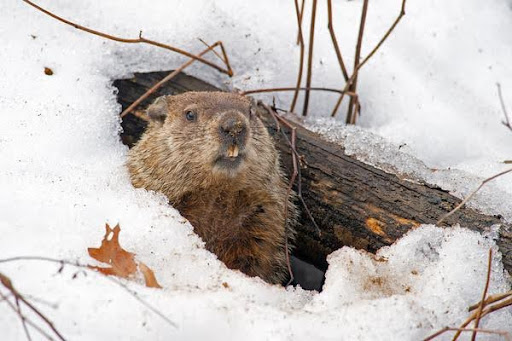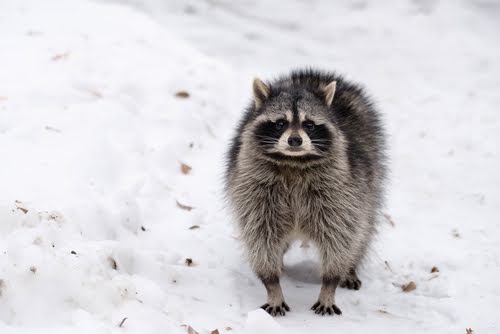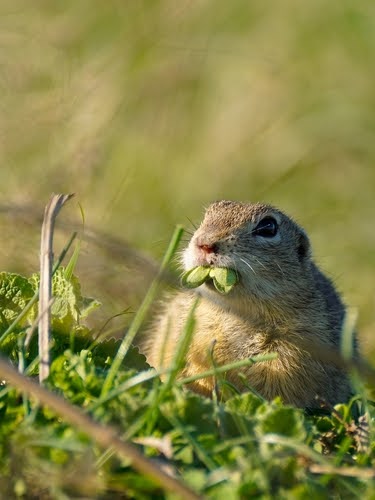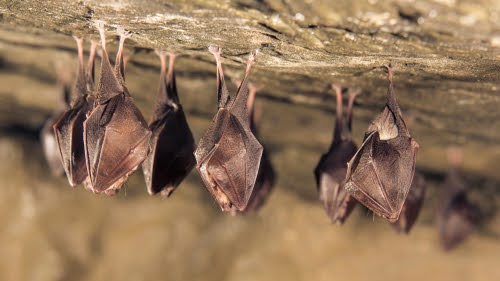Did you know that all kinds of common wildlife pests hibernate? In fact, they may hibernate in or around your home if you let them. The experts at Varment Guard have put together your go-to guide to hibernation so your home doesn’t become a prime wintering spot.
The Basics: What is Hibernation & How Does it Work?
Hibernation is an extraordinary survival mechanism that allows certain animals to endure harsh winter conditions by significantly slowing their body processes. This natural state helps them conserve energy and survive for extended periods without the need for food or water. Here’s how it works:
- Metabolic Slowdown: During hibernation, an animal’s metabolism, heart rate, and breathing slow dramatically. This reduces energy consumption, allowing the animal to survive solely on stored body fat.
- Temperature Drop: The animal’s body temperature falls—sometimes even to near-freezing levels—further minimizing energy expenditure, as the body no longer needs to keep itself warm.
- Energy and Nutrient Conservation: Fat stores accumulated before hibernation sustain the animal’s body. Whenever body temperature drops too low, the stored fat provides both energy and warmth, preventing the animal from freezing.
- A Different Kind of “Sleep”: Although hibernation appears similar to sleep, it is actually a distinct physiological process. Unlike regular sleep, which primarily affects brain wave patterns, hibernation impacts the body’s metabolic functions. In fact, the brain activity of hibernating animals often mirrors that of their waking state. Some animals even have to briefly “wake up” during hibernation to enter actual sleep cycles.
- No Waste Production: To optimize survival, hibernating animals don’t produce waste, as their digestive processes effectively shut down. Remarkably, animals like bears recycle waste products into amino acids, sustaining themselves without any external nutrients.
Hibernation varies by species, with some animals entering this state for weeks and others for months. Through this adaptive process, animals can conserve energy and survive extreme conditions until food and water are available again.
Torpor vs. Hibernation: What’s the Difference?
Some animals, including skunks and certain bats, enter a lighter form of dormancy called torpor. Unlike true hibernation, torpor is temporary, allowing these animals to wake up periodically to feed and replenish energy before going dormant again.

Which Animals Hibernate?
- Ground Squirrels hibernate to avoid food scarcity, with a significantly lowered metabolism.
- Groundhogs hibernate in burrows, experiencing long periods of immobility and slow breathing to conserve energy.
- Bats (some species) enter prolonged hibernation in caves or sheltered spaces to survive cold months.
Which Animals Don’t Hibernate?
- Opossums remain active throughout winter, seeking food and shelter as needed.
- Coyotes adapt by staying active all year, even in colder weather, without entering dormancy.
- Raccoons stay active, often finding food sources around human habitats.
- Moles continue foraging underground, benefiting from the insulated soil even during winter.
- Skunks seek out warmth and easy access to food and water during winter.

How Do Animals Prepare for Hibernation?
Hibernating animals are highly attuned to seasonal changes, preparing for winter as soon as they sense fall approaching. In order to survive hibernation, these animals undergo a series of crucial preparations:
- Securing Safe Shelter: Hibernating animals are vulnerable while dormant, so finding a secure and insulated shelter is essential. Many animals create specialized dens, called “hibernacula,” which are well-hidden, insulated, and sometimes stocked with emergency food. Others may seek out secluded spots or even take over abandoned dens.
- Building Up Fat Stores: To sustain themselves through winter, hibernating animals must consume extra food to accumulate layers of body fat. This fat not only provides essential energy but also helps insulate and keep them warm during their immobile state.

How to Keep Wildlife Pests Away From Your Home
Whether they are hibernating animals or not, wildlife pests look for warmth during the winter. Here’s how to keep your home from being a source of warmth:
- Seal Entry Points: Inspect your home’s exterior and seal any gaps, particularly around the roof, vents, attic, and crawl spaces. Even small openings can let pests slip in.
- Install Chimney and Vent Covers: Use sturdy caps on chimneys and covers on vents to prevent wildlife entry, while still allowing airflow.
- Trim Tree Branches Near Your Roof: Overhanging branches can give animals like squirrels and raccoons easy access to your roof. Trim them back to keep pests from getting too close.
- Secure Food Sources: Ensure trash cans are sealed, bird feeders are distant, and outdoor pet food is removed promptly. These measures prevent wildlife from lingering around your home.
- Store Firewood Away from Your Home: Firewood stacks are inviting shelter for pests. Keep them at least 20 feet from your home and off the ground if possible.
- Use Motion-Activated Lights: Motion-activated lights or sprinklers can deter wildlife, keeping animals like raccoons and skunks from approaching your yard.
- Consider Professional Help: If you’re seeing signs of wildlife activity or want added peace of mind, contact Varment Guard for effective wildlife-proofing solutions.
Don’t Let Your Home Be a Hibernation Hot Spot. Call Varment Guard!

As winter approaches, hibernating animals begin eating more than usual and scouting for warm, protected shelters. Make sure these shelters aren’t in or around your home! If you’d like assistance wildlife-proofing your property, contact Varment Guard today!







